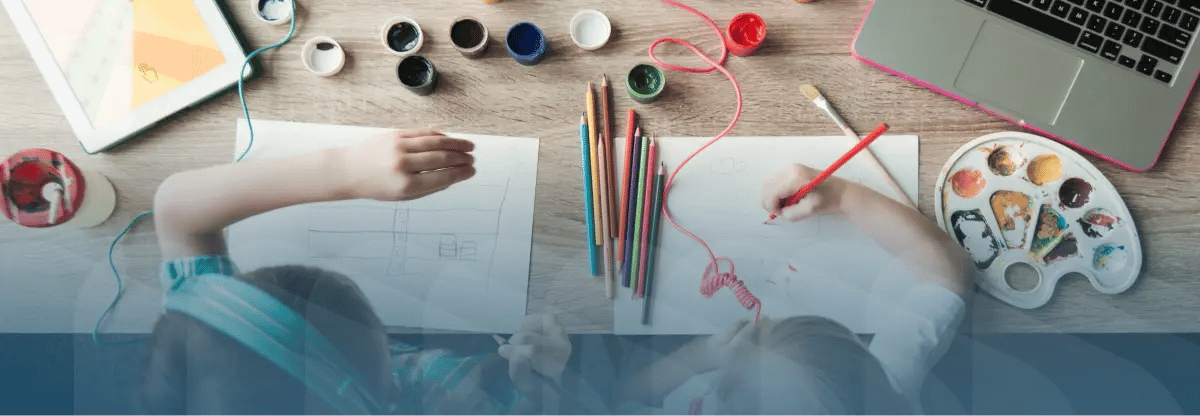
For teachers and school administrators, learning goes far beyond just knowing the content and developing academic skills in the classroom; it’s about developing the whole student. In the classroom, this holistic approach to learning is called social and emotional learning (SEL). Social emotional learning activities involve focusing on things that aren’t always tangible, such as collaboration, perseverance, and self-awareness.
Let’s dive in to learn more about what SEL is and why it's important. We’ll also share 12 social emotional learning activities that you can use in the classroom today.
What is social emotional learning?
Social emotional learning is an educational framework that focuses on developing students’ life skills beyond academic achievement. These SEL skills build a foundation for successful students and prepare them for a successful and happy life outside of the classroom. SEL is based on the Collaborative for Academic, Social, and Emotional Learning (CASEL) framework. The CASEL Framework involves 5 key skills:
- Self-awareness – Students understand how they learn most effectively, and they develop study habits and mindfulness techniques to help them be successful.
- Self-management – Using SEL, students incorporate skills like time management, impulse control, adaptability, organization, and motivational strategies to grow socially and academically.
- Social awareness – As students develop an understanding and sensitivity to the perspectives, emotions, and needs of others they become aware of their role in their community.
- Relationship skills – These skills encompass a range of abilities that allow students to establish and maintain healthy and positive connections with others.
- Responsible decision-making – This aspect of SEL gives students the power to consider the impact of their decisions on themselves and others while making choices that are in the best interest of the community.
Why is social and emotional learning important?
So why has there been so much focus on social emotional learning? The answer is simple: SEL empowers students to develop holistically and grow up to be more productive members of society and lead more fulfilling lives. However, SEL is not just a buzzword. Research shows that social emotional learning activities improve social skills, emotional regulation, and improve academic achievement.
In both the K-12 and college classrooms, SEL does more than boost achievement and skills — it helps to create a safe classroom environment where students can learn and grow together. As students develop as social emotional learners they develop leadership skills, empathy, and conflict resolution skills which allow them to navigate a wide variety of situations.
12 social emotional learning activities to try in the classroom
For students to grow and utilize SEL skills they need the opportunity to practice both inside and outside of the classroom. Teachers can embed social emotional learning activities directly into their lesson plans to provide natural chances for students to use SEL skills. Here are 12 ready-to-go social emotional learning activities that you can try in your classroom right now.
1. Virtual personal check-ins
Connection circles and weekly check-ins give students a chance to get to know one another and allow the teacher to get a good idea of how students are feeling in their class. While these social emotional learning activities are traditionally done face-to-face, teachers can add another layer of engagement and fun by having students check in virtually. To do this students can use video, audio, images, and other multimedia tools to express themselves and share their feelings.
One benefit of having students use multimedia in this way is that multilingual learners, neurodivergent students, and introverts can have more time and may feel less pressured when compared with asking them to speak in front of the class.
2. Mindfulness activities
The school day and life outside of school can be stressful for students. Mindfulness activities give students the tools they need to manage challenges in life. These social emotional learning activities could include things like deep breathing techniques, guided meditation, gratitude journaling, and yoga or tai chi. The idea here is to teach students how to slow down and take a look at the world around them before making a decision or moving forward with their day.
3. Random acts of kindness
Being kind is contagious. For this social emotional learning activity, students perform a kind action or helpful task for another person without expecting anything in return. These acts don’t have to be large (but they can be!), saying hello to a person, complimenting a friend, or even holding the door open for another are all acts of kindness that can brighten a day.
To help students get started the teacher can create a short list of items that students can try and challenge them to document their activities, or better yet, students can brainstorm these acts themselves. Teachers can multimedia to the party by having students design interactive videos or digital posters showing different acts of kindness.
4. Digital culture wheel
Leaning into students’ culture and individuality while learning about culture more broadly is an important part of social and emotional learning. One way that students can do this is by creating and sharing a culture wheel. A culture wheel asks students to take various aspects of their life or childhood such as religion, gender, age, and relationships, and think about how they impact who they are today.
Educators can ask students to create multimedia presentations or a short video explaining different cultural identities that the students may have. For example, if a student grew up on a farm they could create a video using images, animations, and audio that shows how growing up on a farm impacts their view of the world and culture today.
5. Reflection journals
Reflection asks students to stop and think about something that happened or the events over a period of time. Students can take five minutes each day or once a week to take some time and reflect on school, life, or just the world in general. Journal entries could include responses to a prompt from the teacher, or they can be a stream of consciousness.
A reflection journal can be done in a traditional notebook, but it doesn’t have to be. A digital reflection journal can allow students to add photos, videos, or other multimedia resources to express how they are feeling or to reflect on events.
6. Make room for gratitude
Research shows that gratitude is linked to an overall better sense of well-being and happiness. Gratitude is about noticing and being happy or thankful for the things that you have in your life. In the classroom, students can write small thank-you notes to one another, take time to name what they are thankful for or write positive affirmations.
7. Daily greetings
The teacher sets the tone for the classroom. One social emotional learning strategy that you can use is to set up daily greetings with your students. Giving a high five, handshake, or acknowledging each student as they come into the room can create a welcoming and safe environment.
The educator also can set up a daily virtual greeting video to share with the class. This video could include things like the daily agenda, learning standards, or just say hello.
8. Multimedia conflict resolution videos
Social emotional learning activities don’t have to be teacher-created. Teachers can have students design, develop, and create a multimedia video to show conflict resolution skills in action. Seeing other students roleplay through difficult situations can make the skills come to life and demonstrate different methods for solving interpersonal problems.
9. Video diaries
Students can get into a daily or weekly routine of recording their thoughts and expressing how they are feeling using a video diary. Taking time to document exciting life events or small gratitudes in a video diary can help students put things into perspective and track how they are doing on an ongoing basis.
These videos don’t have to be complex either, a simple 30-second clip or quick check-in will work just fine. However, if students are into it they can get fancy and add music, images, or animations.
10. Positive affirmations
Bringing a positive mindset into the classroom is an important part of developing social and emotional learning skills. Students can write positive affirmations to themselves or others either through multimedia and video or through a simple note.
Social emotional learning activities that use positive affirmations are a great way for students to get to know each other as well. It can be fun to have students take some time to sit with a person that they don’t normally talk to and give them some authentic praise.
11. What would you do? situations
Teachers can give students real-life situations or scenarios and ask them how they would act if they were to experience those situations themselves. Doing this activity is a great way to prompt student discussion and teach students how to weigh different factors before making a choice. To make this SEL activity even more engaging teachers can have students respond to the scenario by creating a short video or filming a short skit showing the choices that they would make.
12. Digital shout-out board
Through various online platforms, students can give each other digital shout-outs in the form of text, video, images, GIFs, or any other multimedia that is available. This is a fun way to build camaraderie and a sense of belonging that is simple and easy to do.
Teachers may also use the shout-out board to highlight great pieces of classwork or students who are doing a fantastic job. All of this serves to increase student motivation and make the classroom a fun place to be.
And a bonus! Virtual guest speakers
Arranging amazing guest speakers is easy when teachers incorporate virtual guest speakers into their classrooms. Using video technology teachers can virtually engage with a person from across the country or the world. Speakers can also prerecord messages and the teacher can use technology to turn their presentation into an interactive video. Bringing these special people into the classroom allows students to practice real-world questioning skills and allows them to interact with an expert.
Social emotional learning activities allow students to build a foundation for life outside of the classroom. Students can practice skills such as self-awareness, emotional regulation, and responsible decision-making during social emotional activities where the stakes are low and the reward is high. Using multimedia tools such as those available through WeVideo empowers educators to engage students in social emotional learning activities in new ways that enhance student growth and SEL development.
Teach SEL skills with video
